When faced with hurricanes, earthquakes, geomagnetic storms and floods, law firms’ data is safer in the cloud than anywhere else. Traditional data centers are built strong to protect against natural disasters, but when it comes time for your data to evacuate, it needs to have somewhere to go. The cloud offers that protection with multiple levels of redundancy across the world, so your data will survive even if one location is hit or damaged. Here are four scenarios the cloud protects your law firm from:
1. Hurricanes
Protecting data during a hurricane is no easy feat. For data centers outside of a hurricane’s direct path, “hardening†is a viable option. A hardened data center has hurricane shields for all windows and doors, is located on an upper floor, an
But, as Hurricane Sandy proved in 2012, even the best facility design does little for protection when in the storm’s direct path. The storm tested the value of cloud services, colocation and redundant facilities, proving that data is more secure when not tied to a single location. Some of the lessons learned from Hurricane Katrina in 2004 proved invaluable in 2012, including the need for redundant backups outside of the hurricane area.
2. Earthquakes
Data center providers know how to protect infrastructure. “Racks need to be bolted down and use seismic restraints, and the facility must have multiple layers of redundancy,†writes Jason Verge for Data Center Knowledge. “While the facility may navigate through an earthquake, it’s the outside infrastructure that poses the biggest threat,†writes Verge.
The cloud offers that protection with multiple levels of redundancy across the world. So your data will survive even if one location is hit or damaged.
No matter how well-prepared the data center provider is, unexpected damage because of external surroundings can put customer data at risk. Verge recommends that data center customers have a second deployment outside of known fault zones.
3. Solar flares
One threat you might not often think of is solar flares. Solar flares, or coronal mass ejections, are events in which the sun flings large amounts of energy and particles into space. If this discharge hits the Earth, it can produce phenomena (like the auroras), but it can also damage and destroy electrical systems not unlike an electromagnetic pulse (EMP).
Many of the precautions for geomagnetic storms are the same as for other disasters (backup power supplies, a disaster recovery plan, etc.). Unlike other natural disasters that simply damage physical infrastructure, solar flares affect electrical systems and can cause months-long outages in certain regions. The only real solution is to have cross-region backup of all your data.
4. Floods
As the world gets warmer and the sea level continues to rise, coastal data centers need to protect against flooding. Emergency backup generators need to be made flood proof, and there needs to be enough fuel stored to last for days. However, at the end of the day, if a data center is in the wrong spot at the wrong time, even the best-made plan might not be enough to keep it online.
Even companies outside of regular flood zones should be aware of this contingency; for example, Phoenix experienced record-breaking flash flooding following the largest single day’s rain ever recorded in the normally dry city.
Surviving disaster
According to Tony Surma, CTO of Microsoft Disaster Response, “The awareness that information is a basic need in disaster response — right along with food, water, and shelter — is driving use of the cloud.†When data is stored in the cloud, companies can “rapidly deploy resources on demand and accommodate large spikes in traffic regardless of local conditions.†This way the cloud protects your data no matter the disaster.
Interested in moving your data to the cloud? Give us a call.
{{cta(‘593e6139-1206-42f2-9e49-887ac48fb1bd’,’justifycenter’)}}



